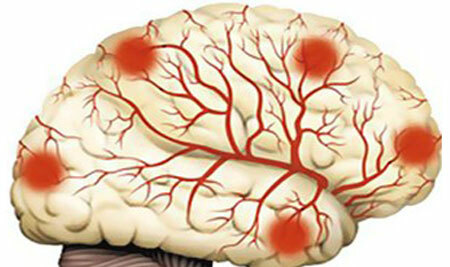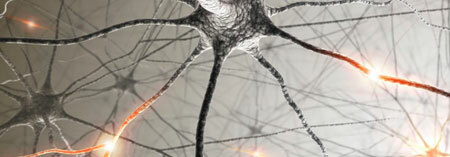What is it? Dyscirculatory encephalopathy is a heterogeneous state, depending on many causes, in a literal translation means "a disorder of the functioning of the" bad "brain."
This widespread chronic form of cerebrovascular pathology is multifocal or diffuse lesion of the brain and leads to a disruption of its functions, which is manifested by a combination of neurological and psychological disorders.
Contents
- 1 Discirculatory encephalopathy - what is this disease?
- 2 Classification vascular encephalopathy
- 3 Symptoms vascular encephalopathy 1, 2 and 3 degrees
- 3.1 Symptoms vascular encephalopathy 1 degree
- 3.2 Symptoms vascular encephalopathy 2 degrees
- 3.3 Symptoms vascular encephalopathy grade 3
- 4 Diagnostics
- 5 Treatment vascular encephalopathy brain
- 5.1 Prevention
Discirculatory encephalopathy - what is this disease?

Gradually increasing circulatory failure leads to the appearance of small-focal multiple necrosis of brain tissue. Dyscirculatory encephalopathy is the result of this process.
At the heart of the disease is atherosclerotic damage to the intracerebral arteries, hypertensive stenosis, which provokes a violation of blood flow in the basin of blood vessels. Long-existing encephalopathy often precedes stroke. The likelihood of the disease increases with the age of the patient.
This concept is not used abroad. The stages of chronic cerebral ischemia that went far in their development are designated by the term "vascular dementia".
The problem is of social importance, since neurological and mental disorders in this pathology can cause severe disability of patients.
Causes of
Hypertension and cerebral atherosclerosis are considered to be the main causes of the onset and progression of discirculatory encephalopathy. More often the appearance of pathology is associated with repeated cerebral hypertonic crises and transient ischemic acts, than with the progression of cerebral ischemia.
Circulatory brain encephalopathy, or a syndrome of chronic brain damage that progresses, has a causal relationship:
- with angiopathy( amyloid, metabolic, autoimmune);
- cardiac pathology;
- by blood diseases;
- hypercholesterolemia;
- with myocardial infarction;
- with systemic vasculitis;
- with diabetes mellitus.
Indirect development of discirculatory encephalopathy can contribute to osteochondrosis - in this disease, because of the deformation of the intervertebral discs, vertebral arteries can be compressed, supplying the brain with blood.
Classification of discirculatory encephalopathy
The heterogeneity of discirculatory encephalopathy is reflected in the etiology, clinical, morphological, and neuroimaging characteristics of its individual forms.
For the main reasons, these types of encephalopathy are distinguished:
- hypertonic;
- atherosclerotic:
- chronic vascular vertebrobasilar insufficiency;
- mixed forms.
The long-term existing arterial hypertension and atherosclerosis, as well as their combination, have great weight in the development of the disease.
The location to high blood pressure automatically makes a person at risk. With its systematic increase to 160/90 the probability of encephalopathy increases several times.
Atherosclerotic encephalopathy develops as a result of ischemic hypoxia. This condition appears due to insufficient blood supply to the brain due to violation of arterial patency.
Symptoms of discirculatory encephalopathy 1, 2 and 3 degrees

Clinical symptoms have certain characteristics, depending on the type of dyscirculatory encephalopathy. Characteristic is the development of the vestibular-atactic, pseudobulbar, cephalic, psychopathological syndromes.
The stage classification is used to assess the patient's condition.
Symptoms of discirculatory encephalopathy of 1 degree
The examination reveals a slight disorder of coordination, symptoms of oral automatism and anisoreflexion, which indicates a small focal brain lesion.
This stage, in addition to diffuse, unexpressed neurologic symptoms, is characterized by a syndrome resembling the asthenic form of neurasthenia. The main symptoms include:
- Increased fatigue;
- Unstable attention;
- Memory loss;
- Decreased productivity of intellectual work;
- Irritability;
- Easy gait change( instability, shortening of the step);
- Sleep disturbance.
Patients at stage 1 of brain dyskirculatory brain encephalopathy often complain of headaches and noise in the head, they are tearful, the mood is often depressed. To diagnose the disease, complaints should appear at least once a week for three months, that is, last for a long time.
Symptoms of discirculatory encephalopathy of 2nd degree
Memory impairment progresses, neurological symptoms are aggravated. Forming a leading syndrome, leading to maladaptation of a sick person. Characteristic symptoms of discirculatory brain encephalopathy of 2 degrees are:
- Decreased circle of interests;
- Looping on some problem( viscosity of thinking);
- Daytime sleepiness and poor sleep at night;
- Violation of coordination of movements( staggering when walking, slowing movements);
- Significant degradation in performance.
Clinically significant depression, fear, anxiety, phobia, intolerance to stuffy rooms and physical exertion can be noted.
Symptoms of discirculatory encephalopathy of the third degree
In the clinic, intellectual-mnestic, psycho-organic, coordinating disorders increase. Symptoms of discirculatory encephalopathy of the third degree become even more pronounced, compared with 1 and 2. At this stage, repeated strokes, hypertensive crises, transient impairment of cerebral circulation are frequent.
Leading features:
- Weakening criticism to its own state;
- Expressed violations of walking and balance;
- Epileptic seizures;
- Restriction of daily activity;
- Severe Parkinsonism;
- The presence of dementia;
- Urinary incontinence.
Patients gradually lose their professional suitability, ability to self-service and require extraneous care.
How much can I live with dyscirculatory encephalopathy of grade 3?Life expectancy depends on genetics, concomitant diseases, severity of atherosclerosis or hypertensive disease. Therefore, it is quite different for different patients.
Diagnosis
For the diagnosis of discirculatory encephalopathy, you need to carefully study the history, assessment of the clinic, as well as the use of instrumental survey methods.
An indispensable condition is the study of lipid profile of patients, as atherosclerosis damages the vessels of all organs and supports the development of hypertension. Diagnostic Methods:
- Doplerography;
- neuropsychological study with emphasis on the state of intelligence, memory and attention;
- MR angiography;
- spiral CT of brain vessels or MRI of the brain;
- electrocardiogram;
- measurement of blood pressure in dynamics.
Treatment of discirculatory brain encephalopathy
Treatment of discirculatory encephalopathy requires a comprehensive approach, primarily to prevent cerebral vascular injury and regulate cognitive impairment.
It is important to start treatment in the early stages, then you can hope for a noticeable effect. In the presence of encephalopathy due to hypertension, regular administration of antihypertensive agents is indicated.
Treatment of atherosclerotic encephalopathy with stable values of high total blood cholesterol, which is held for at least six months with a strict diet, means the use of statins - drugs that reduce cholesterol. In addition,
- antiplatelet agents( acetylsalicylic acid) and anticoagulant therapy( warfarin) are used in combination;
- vitamins and vitamin complexes, including ascorbic acid, vitamin B6 and nicotinic acid;
- antidepressants;
- neuroprotectors( piracetam).
In addition to drug treatment, it is necessary to maintain a low-calorie diet with restriction of consumption of table salt and animal fats.
The complex uses physiotherapy, spa treatment, therapeutic exercises, massage.
Prevention
To prevent discirculatory encephalopathy, a lot means a healthy lifestyle and a balanced diet. Increased physical activity also gives a good preventive result.
It is necessary to control all the time the level of arterial pressure, the content of cholesterol and its fractions in the blood.
Diseases of cerebral vessels are considered the most common pathology in the practice of a neurologist. Dyscirculatory encephalopathy is one of the leading causes of cognitive impairment and dementia, disability in old age.
Comprehensive assessment of patients' condition, influence on the underlying cause of the disease and symptoms contributes to improving the quality of life, preventing serious complications.



